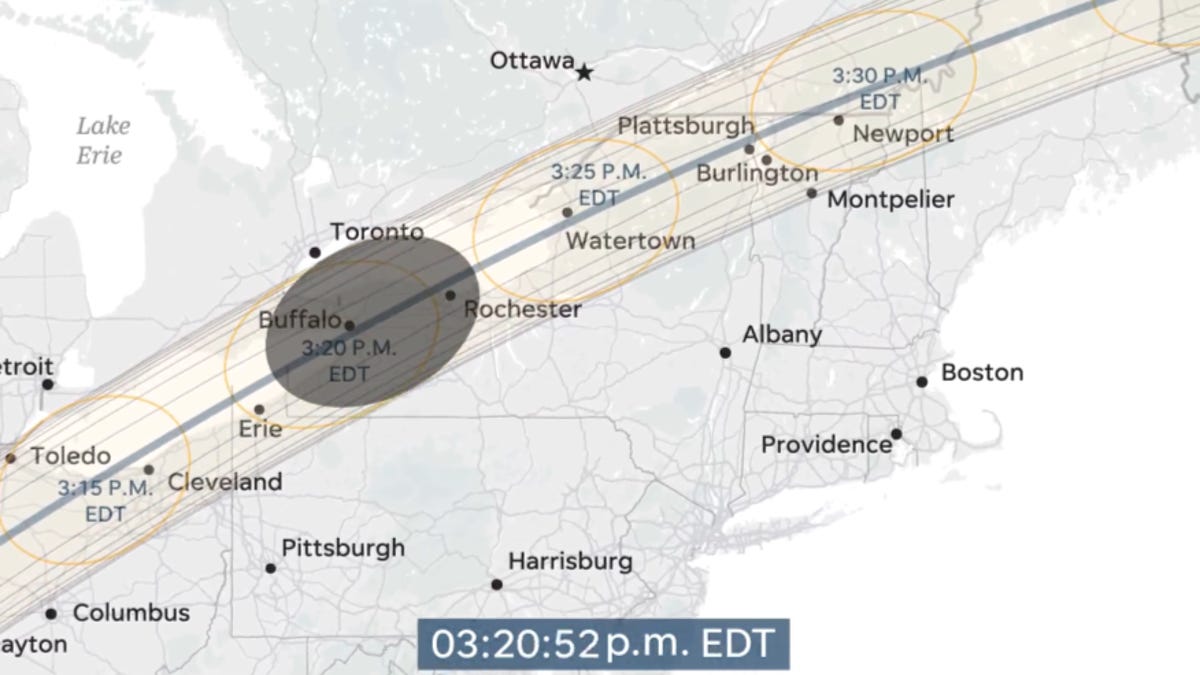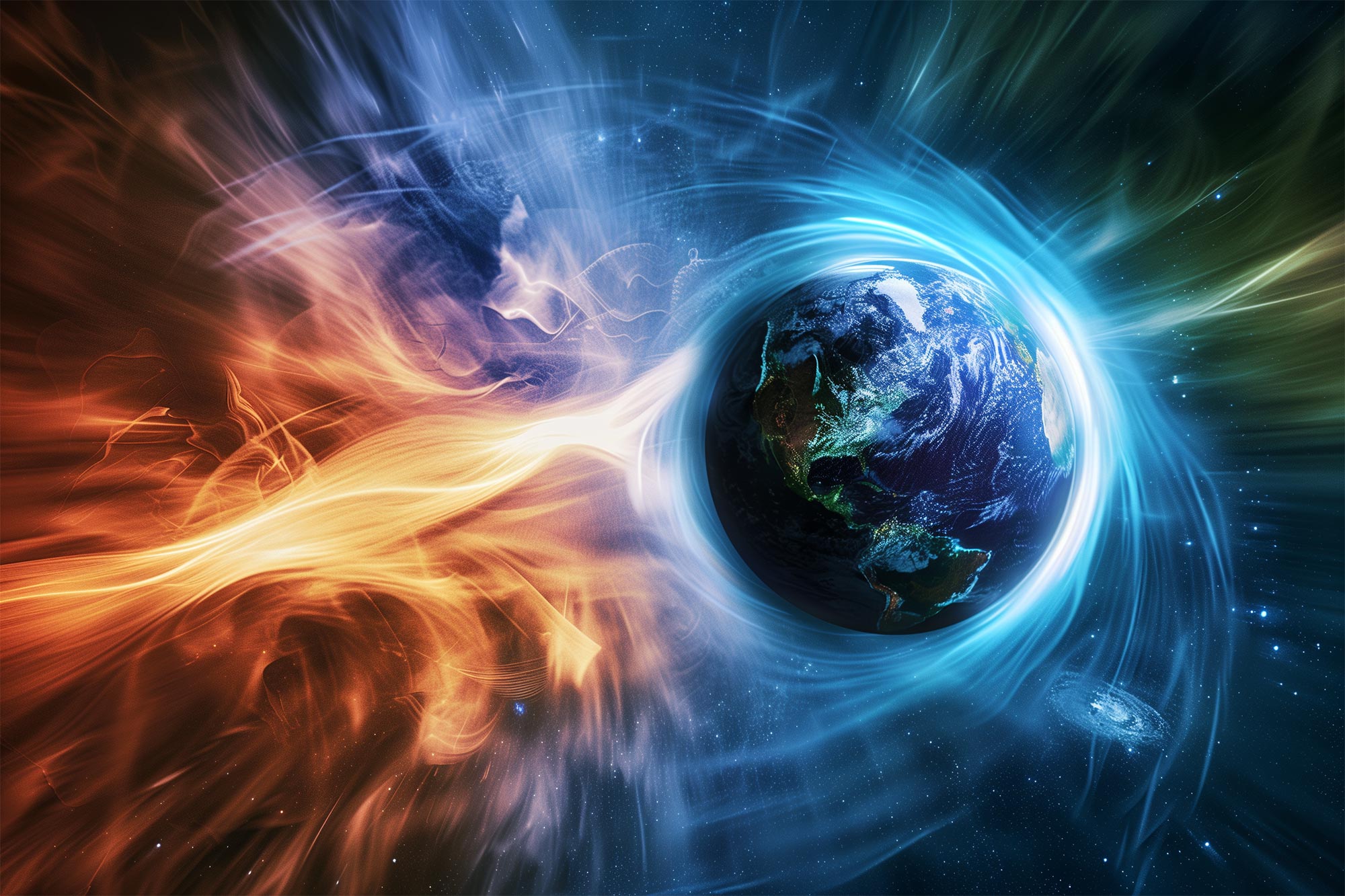Surprising effects during a total solar eclipse
Not only does day turn to night under totality, our surroundings also change. Try to notice these changes under the total eclipse.
Across North America, notable cities in the path of totality for the 2024 solar eclipse include Mazatlán and Torreón, Mexico; San Antonio, Austin and Dallas, Texas; Little Rock, Arkansas; Indianapolis, Indiana; Cleveland, Ohio; Buffalo and Rochester, New York; Burlington, Vermont; and most of Montreal, Canada.
In New York, Niagara Falls, Buffalo and Rochester will all be in the path, as will Watertown and Plattsburgh.
Locally, Brockport is directly on the center line of totality, as is the Horseshoe Falls in Niagara Falls.
The shadow will be traveling at an average of about 2,300 miles per hour across New York state and will only take about 10 minutes, from one side of state to the other, said Dan Schneiderman, eclipse partnership coordinator for the Rochester Museum & Science Center.
Follow the solar eclipse path of totality 2024
What time is the total solar eclipse 2024 across the US
What time is the eclipse in Rochester NY?
Starting at 2:07 p.m. April 8 in Rochester, the moon will begin to appear to move in front of the sun. Totality begins at 3:20 p.m. and will last for 3 minutes and 38 seconds (plus or minus a few seconds depending where you are standing.) By 4:33 p.m. the moon will have moved past the sun returning the light to normal.
What happens during total solar eclipse?
The moon will line up perfectly between the Earth and the sun, blotting out the sunlight. It will take just a couple hours for the moon’s shadow to slice a diagonal line from the southwest to the northeast across North America, briefly plunging communities along the track into darkness.
Among the cities smack dab in the action: Dallas; Little Rock, Arkansas; Indianapolis, Cleveland, Ohio; Rochester, Buffalo, New York; and Montreal — making for the continent’s biggest eclipse crowd.
But, practically everyone on the continent can catch at least a partial eclipse. The farther from the path of totality, the smaller the moon’s bite will be out of the sun.
Why is path of totality longer?
By a cosmic stroke of luck, the moon will make the month’s closest approach to Earth the day before the total solar eclipse. That puts the moon just 223,000 miles away on eclipse day. The moon will appear slightly bigger in the sky thanks to that proximity, resulting in an especially long period of sun-blocked darkness.
What’s more, the Earth and moon will be 93 million miles from the sun that day, the average distance. When a closer moon pairs up with a more distant sun, totality can last as long as an astounding 7 1/2 minutes. The last time the world saw more than seven minutes of totality was in 1973 over Africa. That won’t happen again until 2150 over the Pacific.
Contributing: Democrat and Chronicle reporter Victoria Freile; USA Today Network

Amanda Smith is a dedicated U.S. correspondent with a passion for uncovering the stories that shape the nation. With a background in political science, she provides in-depth analysis and insightful commentary on domestic affairs, ensuring readers are well-informed about the latest developments across the United States.








